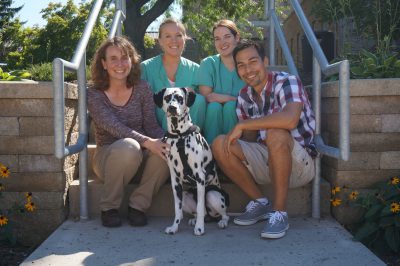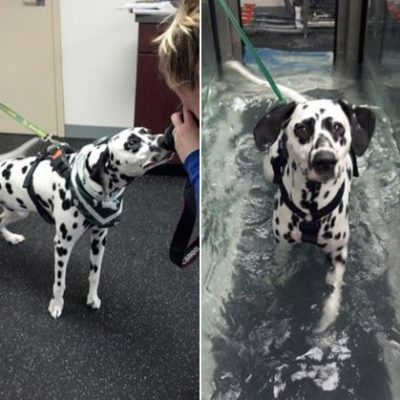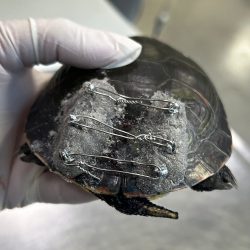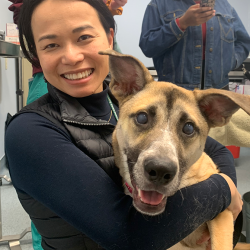One Wednesday afternoon, Cyndi and Todd noticed that their eight-month-old Dalmatian Dewey was moping around and didn’t want to play. He was not his normal energetic self. Later, he developed a fever.
Cyndi and Todd thought Dewey might have been exposed to pesticides sprayed by their neighbor the day before. Their vet determined poisoning wasn’t likely, since Dewey was having no intestinal problems and was eating normally.
But Dewey’s symptoms grew worse and it was clear that he was in pain. After a few diagnoses from different veterinarians, Dewey became stiff legged and was exhibiting signs of severe pain. That was when Cyndi and Todd brought Dewey to the MSU Veterinary Medical Center.
“We didn’t know what was wrong, but we wanted to see if there was something that could be done for him,” Cyndi said. “He is so young.”

MSU clinicians ran several tests on Dewey, including checks on tick-related diseases. When none of the tests determined Dewey’s problem, they ran an MRI. On the MRI, the team saw a spot on Dewey’s spine, which was identified as an arterial bleed.
After the diagnosis, Cyndi and Todd realized Dewey’s injury must have happened when they were playing Frisbee on Tuesday night.
Because the surgical solution carried a big risk, neurologist Joshua Gehrke decided against it.
“The team did an awesome job of getting him back to where he was before the accident. Anyone who has seen him after the accident says you’d never notice there was ever a problem with him.”
“They built a cast so Dewey would stay still, so his body could absorb the blood and heal on its own,” Cyndi explained. “The cast covered him from just below his ears to below his ribs.”
After about a week in the hospital, Dewey was released with detailed instructions for intensive at-home care.
In the beginning, Dewey was unable to move on his own, so he had to be flipped every four hours to avoid bed sores. Cyndi and Todd had to rub Dewey where his body wasn’t covered up by the cast in order to keep his nerve endings alert.
Cyndi and Todd rotated his legs a few times a day in a biking motion to keep his joints loose.
Bit by bit, they let Dewey support more of his weight so he could rebuild his muscles.

After two weeks, Dewey was starting to crawl around and was more than ready to be out of the cast. Dr. Gehrke removed it and sent Dewey to the Dr. Elwood and Linda Collins Rehab Center at the MSU Veterinary Medical Center. Dewey loved his time in rehab, balancing, dancing, and using the water treadmill. Eventually, he could climb on objects with different levels.
“The team did an awesome job of getting him back to where he was before the accident,” Cyndi said. “Anyone who has seen him after the accident says you’d never notice there was ever a problem with him.”
Today, Dewey is maintaining that status of back to normal. But being out of rehab doesn’t mean it’s the end of learning for Dewey.
“We are going to put him back in basic training. His spoiled spotted self has forgotten some of his manners,” Cyndi said. “Plus, he loves to work!”



